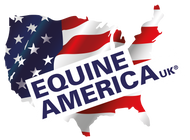The Benefits of Oil

With all this freezing weather and snow, you may be looking for something extra to feed your horse to maintain weight. Have you thought about oil?
Oil has long been accepted as a good way to add non-heating calories for those horses and ponies who need extra calories to help with weight gain or work but need a low starch and sugar diet, making it great for veterans, those prone to laminitis and competition horses. We also all know that oil will help with a nice glossy coat. But what else can it do?
- Support joint health
- Provide calories for horses with dental disease that struggle to chew effectively.
- Support hoof health.
- Benefit reproductive health including improving semen quality, particularly for stallions that have previously struggled to chill or freeze their semen.
- Support immune function.
- Support endocrine (hormone) function.
- Support respiratory function
- Help neurological function
- Improve skin and coat condition
- A high oil diet is recommended for horses at risk or prone to gastric ulceration
What is the difference between Omega 3 and Omega 6 Fatty Acids?
Oil is made up of fatty acids, and we are particularly interested in the 2 groups of polyunsaturated fatty acids: omega 3 fatty acids and omega 6 fatty acids. These are thought to have health implications for horses and ponies.
Omega 3 fatty acids are derived from ALA (alpha-linolenic acid) – including EPA (eicosapentaenoic acid) and DHA (docosahexaenoic acid). The horse is able to convert ALA to EPA and DHA, when ALA is provided in the diet.
Omega 3’s play key roles in many metabolic processes but they are also anti-inflammatory. Oils high in omega 3’s include fish oils and linseed (flax) oils. Fish oils contain EPA and DHA, and linseed oil contains ALA which can be converted to EPA and DHA in the horse’s body.
Omega 6 fatty acids stem from LA (linoleic acid). Omega 6’s are metabolised to produce important chemicals which are involved in the pain and inflammatory response, which is vital to starting the healing process, and so most have become known as pro-inflammatory. Corn oil, soya oil and sunflower oil are all rich in omega 6’s.
There is a balance required between the mainly pro-inflammatory omega 6’s, which are important in the start of the healing process, and anti-inflammatory omega 3’s, which help prevent ongoing damage from excessive inflammation arising, for example, from hard work, and the ageing process.
The natural diet of horses in the wild consists mainly of fresh forage, which contains more omega 3 fatty acids than omega 6 fatty acids – especially when the grass is growing. Research has not fully determined the ideal ratio of omega 3 to omega 6 in the diet, but it is estimated that fresh grass has a ratio of omega 3 to omega 6 of between 3 and 4:1.
In contrast, the modern competition horse is typically fed a mixture of cereals and dried forages, and this diet is much higher in omega 6’s than omega 3’s, as cereals are naturally higher in omega 6’s and the drying process of hay results in the loss of most omega 3’s. The result is this diet will typically have much higher levels of pro-inflammatory omega 6 fatty acids, and a low level of anti-inflammatory omega 3’s.
Providing additional sources of omega 3’s in the diet of most horses and ponies, but especially those in hard work, youngstock and breeding horses, older horses, or those with very limited access to grazing, is vital to help provide anti-inflammatory support, and help to ensure the correct ratio of omega 3’s to omega 6’s in the diet is maintained to promote optimum health and performance.
What type of oil should you feed? Fish oils or Plant Oils?
In practical feeding situations, although fish oils contain higher levels than plant sources of EPA and DHA, they can be very unpalatable, and there are also question marks over sustainability and the environmental impact of using fish oils.
EA Supreme Omega Oil contains linseed (flax) oil to provide ALA for the horse to convert EPA and DHA, and although the conversion rate is not fully understood, there are marked and noticeable benefits for most horses arising from feeding 30-60mls per day of this additional source of omega 3 fatty acids.
If you are introducing oil to your horse’s diet, it is important to introduce it gradually over 1- 2 weeks, to allow the gut to adjust and prevent digestive upsets. When feeding higher levels of oil, it’s also important you ensure your horse has enough Vitamin E in his diet, and so additional oil should be fed as part of a balanced diet.
 Skip to content
Skip to content

